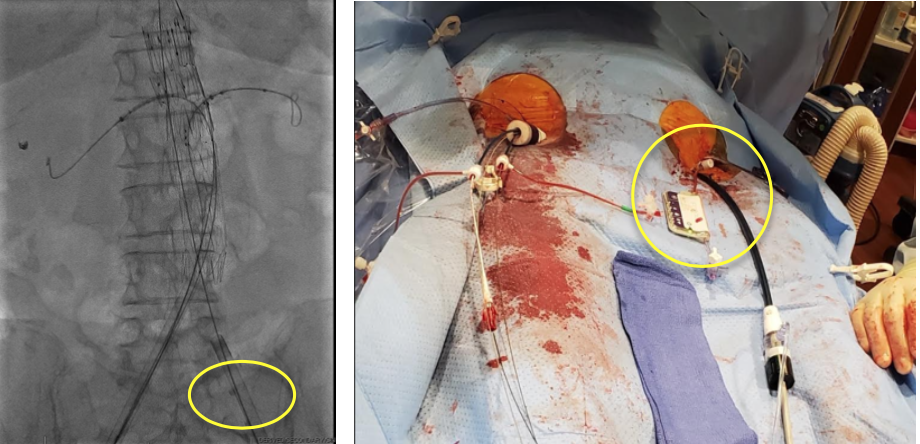FEVAR Surveillance With Early Bird® Bleed Monitoring System
Bart Muhs, MD, PhD – Middlesex Hospital

Background
Fenestrated endovascular abdominal aortic aneurysm repair (FEVAR) is associated with higher rates of transfusion and postoperative complications compared with standard EVAR.
COVID-19 has resulted in a surge of hospital admissions that negatively impacted ICU capacity within hospital systems.
The Early Bird detects internal bleeding prior to the onset of complications, enabling physicians to mitigate the consequences of the bleed.
Case
- 76 year-old female with 5.7cm rapidly enlarging juxtarenal AAA
- Pre- procedure CTA revealed 6.0mm iliac with surrounding calcium causing access concern
- Bilateral 20 Fr (OD 7.8mm) arterial sheath
- No ICU capacity available due to COVID-19
Results
- Patient was monitored for a total of 6 hours post-procedure.
- The patient was monitored for bleeding by the Early Bird on the floor without burdening the ICU capacity.
- The Early Bird Level 1 indication occurred but did not progress during the monitoring.
- The patient was able to avoid an overnight ICU stay due to the Early Bird bleed detection monitor.
Discussion Points
Bleed monitoring during FEVAR is possible with the Early Bird.
The Early Bird Bleed Monitoring System provides assurance to clinicians that no intra and post- procedural bleeding events occur for a patient vulnerable to bleeding complications.
Integration of FEVAR cases with the Early Bird may reduce hospital resources required to monitor patients and alleviate the burden on the ICU.